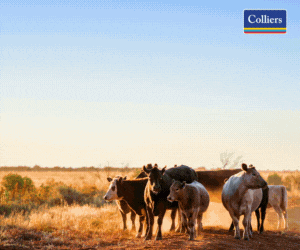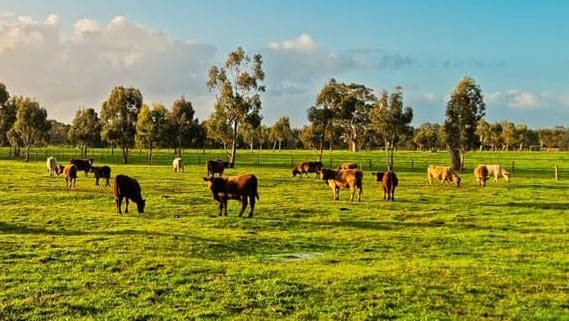A NEW research report released by Meat & Livestock Australia has shown that the Australian red meat and livestock industry has reduced its net greenhouse gas (GHG) emissions by 78pc since 2005.
The report by CSIRO, Australia’s National Science Agency, provides an updated estimate of emissions attributable to the production and processing of beef, sheep and goats based on the 2021 Australian National Greenhouse Gas Inventory.
In 2021, net greenhouse gas emissions from the red meat industry were 31 Mt CO2-equivalent, representing a 78pc decrease compared to the reference year of 2005.
Last year MLA released the same study of the beef industry GHG footprint from 2005 to 2020, which showed a 65pc decrease – meaning the industry reduced its footprint by a further 13pc.
According to MLA’s Carbon Neutral 2030 Project Manager, Julia Waite, this reduction in the net emissions position was primarily due to impacts in the land use sector.
 “Low rates of clearing and greater volumes of regrowth have contributed to a larger pool of carbon on land associated with livestock management, bringing down the collective position of the sector,” Ms Waite said.
“Low rates of clearing and greater volumes of regrowth have contributed to a larger pool of carbon on land associated with livestock management, bringing down the collective position of the sector,” Ms Waite said.
“The contribution from land use change was particularly significant between 2020 and 2021 due to high rainfall, which was 9pc above the historical average, and conditions favourable for vegetation growth during La-Niña.
“The contrast is especially stark given the previous two reporting years were marred by drought and bushfires.
“Given the variability of the Australian climate, we anticipate sequestration volumes will retract when conditions trend back towards drier El Nino.”
Further detail on the industry’s progress in reducing emissions against CN30, including emissions data from 2021, will be published in the Australian Beef Sustainability Framework Annual update, which will be launched at Beef Australia in Rockhampton next week.
Ms Waite said the annual emissions reports by MLA continued to be informed by the best available science and nationally maintained data. The latest report revises historical emissions, as more accurate data and methods have been adopted into the National Greenhouse Gas Inventory.
Emissions are attributed to the red meat industry based on animal numbers, feed intake, livestock processed, and resource use. It is part of the industry’s work in annually benchmarking its GHG footprint, which has been occurring since 2015.
The largest proportion of direct emissions from red meat is enteric methane produced by grazing beef cattle. These emissions have remained stable in recent years.
Sequestration attributable to the red meat sector is estimated from FullCAM which uses satellite imagery to account for change in Australia’s landscape.
She said that while the trajectory was positive since 2005, MLA recognised the broader expectation for direct emissions reduction while maintaining production of high-quality protein. This is supported by investment in research and development, and initiatives to support Australian red meat producers to adopt practices that provide a win-win for business and the environment.
“In the short to medium term, sequestration helps to balance the ledger while the private and public sector continues to invest in options for direct emissions reduction,” Ms Waite said.
“Increasing production and resource efficiency, use of renewable energy, and manure management are the primary tools at our disposal today to lower emissions of livestock production.
“Novel interventions like low methane pastures, supplements, and genetic indexes are likely to play a bigger role in the later part of the decade, provided they are commercially viable with co-benefits for the whole farm business.
“Over time this can reduce the reliance on sequestration.”
Since 2017, Meat and Livestock Australia has co-invested $152 million in research, development and extension to support net emissions reduction of the red meat supply chain.
In 2017 the Australian red meat industry committed to achieving carbon neutrality by 2030 (CN30). The CN30 target definition is Net zero greenhouse gas emissions by 2030.
Storage of carbon in grazing landscapes is sensitive to climatic conditions, and continued progress towards net zero goals will require a reduction in animal emissions, particularly enteric CH4.
Source: MLA

